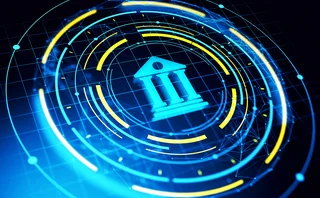
Coulter considers risk concentration

In the speech, entitled Derivatives, risk, governance: a call to action, Coulter specifically addressed concerns about the concentration of risk among a small group of financial intermediaries – of which JP Morgan is by far the largest.
The following is an edited extract from his speech:
“Probably one of the biggest questions around systemic risk is the issue of participant exit. Does the market share of individual derivatives players lead to concern about risk in key financial intermediaries and what the failure of such an intermediary would mean? Market-share data is based upon notionals and often vastly overstates concentration of risk in counterparty agreements. Using OCC (US commercial banks) data alone, JP Morgan controls as much as 1/3 of the interest rate and credit derivatives markets. However, adding non-US banks and investment banks to the population yields a share for JP Morgan of less than 18%. This is based on BIS data for 2002. This figure includes some ongoing overestimation of our share. If we make some assumptions about the proportion of the market that is inter-dealer, and eliminate the double-count arising from transactions between reporting dealers, our share would reduce to 13–14%. Our market shares vary greatly from product to product. Using this unadjusted (that is, 18%) approach, our share ranges from a high of 22% for interest rate contracts to a low of 12% for forex contracts. Deutsche Bank has the second highest share of the total market, with about 10%, and Bank of America has about 8%. Goldman Sachs and Morgan Stanley don’t publicly disclose notionals. Our large share is due in large part to the substantial role JP Morgan plays in the inter-dealer market in interest rate contracts.
“In my view, the risk of a major dealer exiting the market is small. But we have planned for the unthinkable and run stress tests to evaluate the impact. We acknowledge that in the case of the less liquid subsets of the derivatives markets (for example, exotic option products) there could be losses around a dealer exit. However, this segment is small, with less than 5% of outstanding volumes. Reduced involvement in this segment of the market would pose no systemic issues, as these contracts are not traded between dealers. No single dealer exiting the market would have a material impact on the more liquid subsets of the market, which constitute the vast majority of outstanding volumes. The withdrawal of a large dealer would be met by increased activities on the parts of other dealers. The key issue is the underlying reason for the exit. If a dealer withdraws from markets gradually because of a strategic shift like Gen Re did after its Berkshire Hathaway acquisition, the impact would be immaterial on financial markets as there is ample liquidity from other dealers and from exchange-traded alternatives. In the normal course of business, if a major dealer were to experience financial distress, other credit markets would contract simultaneously – it’s not clear whether derivatives would make this any worse.
“One of the stress scenarios that we run is a large competitor of ours leaving the market in an aggressive way. It would cost us money. We have an estimate of how much it would cost and we believe we could absorb that into our regular daily, monthly, quarterly earnings stream without having to change our strategy or imperil the firm in any significant way.
“We’ve become very good at controlling transaction flow, mark-to-market practices, reporting, valuation, credit approvals, value-at-risk and stress limits – all with the intent of managing risk in specific areas. We’ve just come through a credit cycle that was as severe as any we’ve seen in the last 30 years, and more severe than most – and despite that, there were no material financial systemic issues as a result of this credit risk and this credit value deterioration.
“But what we haven’t done enough of and what we need to do much better is take a step back, look at the net, aggregate all the flows and look at the big picture to make sure we’ve considered all the scenarios.”
Only users who have a paid subscription or are part of a corporate subscription are able to print or copy content.
To access these options, along with all other subscription benefits, please contact info@risk.net or view our subscription options here: http://subscriptions.risk.net/subscribe
You are currently unable to print this content. Please contact info@risk.net to find out more.
You are currently unable to copy this content. Please contact info@risk.net to find out more.
Copyright Infopro Digital Limited. All rights reserved.
As outlined in our terms and conditions, https://www.infopro-digital.com/terms-and-conditions/subscriptions/ (point 2.4), printing is limited to a single copy.
If you would like to purchase additional rights please email info@risk.net
Copyright Infopro Digital Limited. All rights reserved.
You may share this content using our article tools. As outlined in our terms and conditions, https://www.infopro-digital.com/terms-and-conditions/subscriptions/ (clause 2.4), an Authorised User may only make one copy of the materials for their own personal use. You must also comply with the restrictions in clause 2.5.
If you would like to purchase additional rights please email info@risk.net
More on Risk management
Op risk data: FIS pays the price for Worldpay synergy slip-up
Also: Liberty Mutual rings up record age bias case; Nationwide’s fraud failings. Data by ORX News
Banks hold 73% of liquidity buffer in cash and Level 1 assets, on average
Largest lenders hold highest share of central bank reserves in buffer, latest analysis shows
EBA supports global op risk taxonomy, but it won’t happen soon
New EU framework designed to ease adoption by banks; other jurisdictions have different priorities
Allocating financing costs: centralised vs decentralised treasury
Centralisation can boost efficiency when coupled with an effective pricing and attribution framework
EVE and NII dominate IRRBB limit-setting
ALM Benchmarking study finds majority of banks relying on hard risk limits, and a minority supplementing with early-warning indicators
Banks split over AI risk management
Model teams hold the reins, but some argue AI is an enterprise risk
Collateral velocity is disappearing behind a digital curtain
Dealers may welcome digital-era rewiring to free up collateral movement, but tokenisation will obscure metrics
New EBA taxonomy could help integrate emerging op risks
Extra loss flags will allow banks to track transversal risks like geopolitics and AI, say experts







